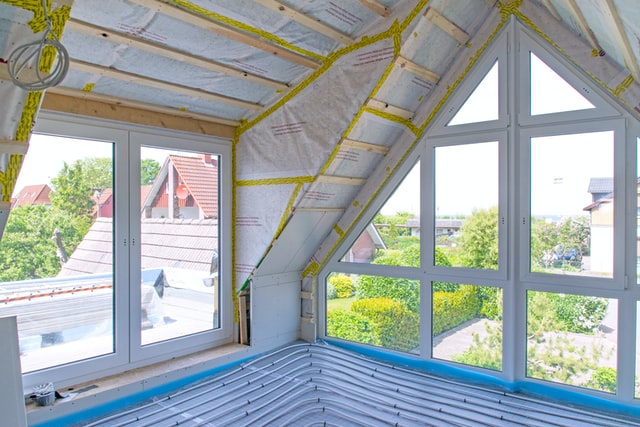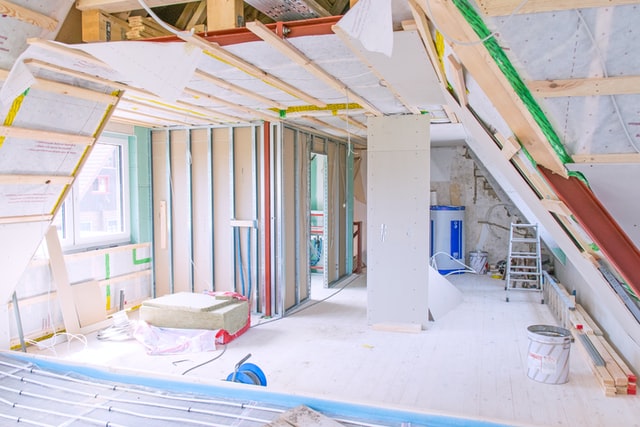When it comes to reducing energy consumption in the house, thermal insulation on the roof saves energy is one of the best options. Because it is comparatively cheap and you can even install it yourself. But what types of roof insulation are there, and what do they cost?
Contents
Types of thermal insulation on the roof
The roof insulation acts as a cap for the house. It increases the energetic quality of the roof and prevents rising heat from escaping to the outside. While this leads to better results in the heating load calculation and lowers heating costs in winter, the roof saves energy. thermal insulation protects against intense heat in summer. Depending on where homeowners apply the materials, the following types can be distinguished:
. The over- rafter insulation
. The insulation between the rafters
. The under-rafter insulation
Above-rafter insulation from the outside
The over-rafter insulation is on the outside of the rafters. It consists of a continuous layer of pressure-resistant insulating material that lies on a so-called vapor barrier. It prevents water penetration from the rooms below and ensures that the materials retain their insulating effect. Compared to other types of thermal insulation on the roof, over-rafter insulation offers excellent thermal insulation. In this way, construction errors, leaks, and thermal bridges can be reliably avoided. The prerequisite for this, however, is that the homeowner also renews the cover.
Insulation between the rafters from the inside
The insulation between the rafters can be attached from the inside. , soft panels made of fiber insulation are clamped between the beams of the roof structure. A thin film, which is to be applied tightly from the inside, blocks the moist air from heated rooms. While homeowners can clad the ceiling from the interior with wood or plasterboard, the rafters remain invisible on the roof after the thermal insulation between the rafters. One advantage, however, is that you can often do the work yourself.
Under-rafter thermal insulation on the roof
The under-rafter insulation can also be attached from the inside. It is attached to the beams of the roof structure and closed with a tight film. While homeowners can easily install this type of thermal insulation on the roof themselves, it reduces the free room height. However, since this is often limited, many use under-rafter insulation to supplement between-rafter insulation to insulate the attic. It increases thermal protection and also helps to avoid thermal bridges effectively.

Insulation material for thermal insulation on the roof
When it comes to suitable materials for roof saves energy insulation, homeowners now have a wide choice. In addition to mats made of mineral wool or foam glass gravel, synthetic insulation materials such as Styrofoam are also used. There are also numerous plant and animal materials with sheep wool, flax, wood wool, or cellulose (cellulose insulation). Which one is the right one depends not only on its physical properties (heat protection, heat protection, strength) but also on the price?
Costs and funding for roof insulation
Thermal insulation on the roof is one of the cheapest and, therefore, most economical insulation measures. The costs mainly depend on the method chosen. While homeowners have to reckon with 25 to 60 euros per square meter for under-rafter insulation, between-rafter insulation costs 40 to 80 euros per square meter. Since over-rafter insulation is only possible with a new roof covering, it costs the most at 150 to 250 euros per square meter.
BEG promotes thermal insulation on the roof
If homeowners have their roofs insulated, they also benefit from high federal funding levels for efficient buildings for individual measures (BEG EM). There are grants of 20 percent or loans with repayment grants in the same amount (from July 1, 2021) for roof insulation. If a renovation schedule suggests the measure, the BEG-EM funding increases by five percentage points.
The prerequisite is that the energetic quality exceeds the Building Energy Act (GEG) requirements, and an energy advisor is involved. While homeowners apply for grants via the BAFA website, you can get cheap loans from your house bank from July 2021. It is essential to know that the funds must always be applied for before the award of contracts.
If you miss the time, you can alternatively claim the renovation tax bonus and claim 20 percent of the costs incurred for tax purposes. If renovators fail to comply with the legal requirements, you can deduct at least 20 percent of the craftsman’s costs.
Details can be found in the text on promoting thermal insulation. There you can also find out about other insulation work that is funded.
Roof insulation and heating replacement
Suppose homeowners want to reduce energy costs noticeably. In that case, it is worth considering replacing the heating system in addition to the thermal insulation on the roof. Because while old heating systems often consume more than necessary, an installer can optimally adapt new devices to the lower heat demand in the house; this ensures efficient operation and noticeably lowers heating costs. We explain which technology is available in the “Modernize roof saves energy heating” guide.







